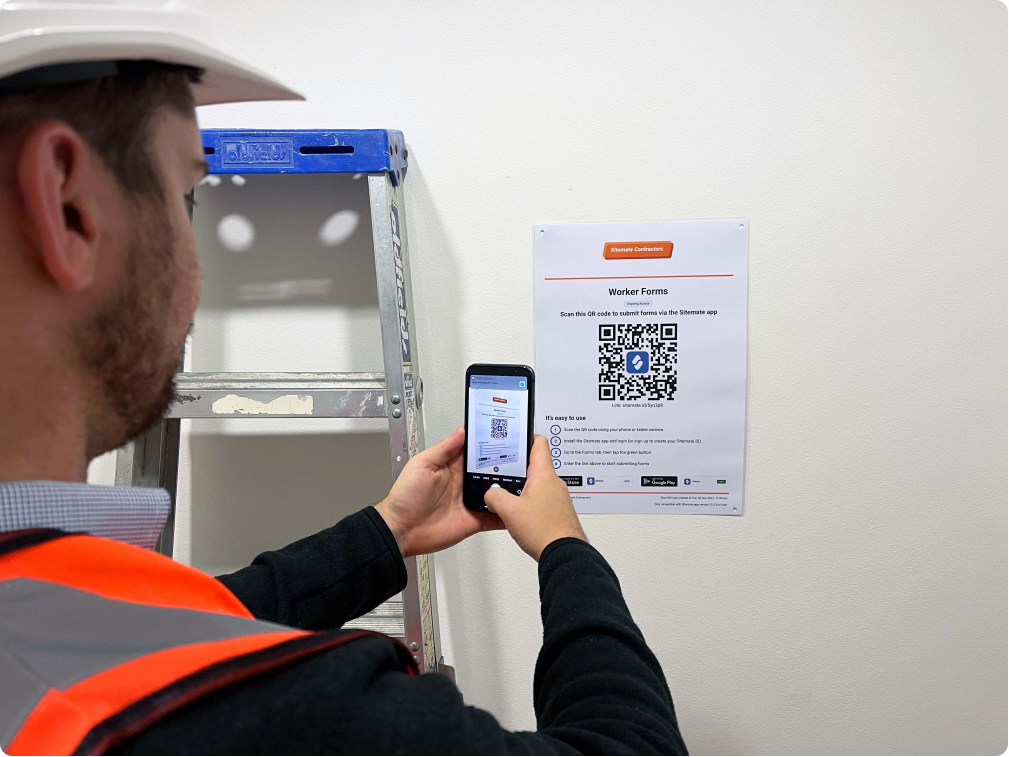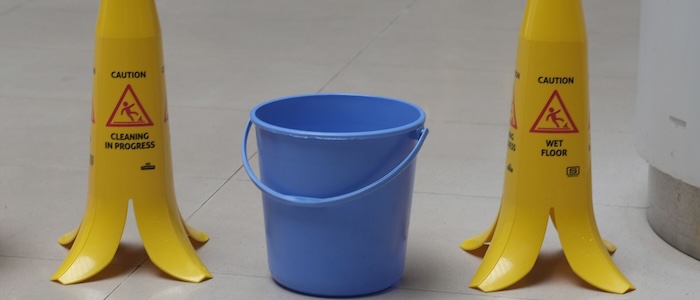Dashpivot Article – CCOHS Ladder Safety

CCOHS Ladder Safety
Ladders are commonly found in the workplace to access elevated areas and hard-to reach places for the purposes of doing maintenance jobs, electrical work, cleaning and the likes. Canadian Centre for Occupational Health and Safety (CCOHS) aims to ensure all Canadians are healthy and safe in the workplace including when using ladders, and has specific CCOHS ladder safety documentation and requirements.
Injuries caused by ladder accidents can be a near-miss to Musculoskeletal (MSK) injuries involving bones and muscles of the person and the severity can range from bone fractures, brain injuries to paralysis and death. Ladder accidents can be caused by a person’s error in judgement both in preparation and actual use or it can be that the ladder is defective and needs to be maintained or replaced. Ladder accidents can also be slip, trip and fall whereby someone mistakenly steps into a ladder, or stepping into a slippery ladder, losing their footing and falls and slips or trips in the ladder itself.
Improper use of ladder is one of the leading cause of workplace fall-related injuries according to WorkSafeBC wherein 35% of the claims are classified serious and tragically losing their lives in 2023.
Ladders are useful work tools that are associated with a significant number of workplace injuries every year. In recognition to this, the CCOHS has established guidelines to help minimise these risks and promote a culture of safety in the workplace.
Selecting the Right Ladder
The first step in ladder safety is choosing the right ladder for the job and Canada uses many different types of ladders according to its purpose, the most common types are extension ladders, step ladders, and fixed-access ladders there are also special purpose ladders but we’ll focus on these three as acknowledged in the CCOHS that are used in the workplace and briefly take a look at its guidelines.
Extension ladders
These portable ladders distinguishingly can extend and can reach heights until 40 feet or more. These types of ladders are non-self-supporting and requires level ground to support its feet and usually has two sections that operate with a bracket.
The most important guidelines to remember for extension ladders are: it needs to be placed on a level ground and secure footing one that is not snowy, slippery or wet as this is the most common reason for accident on a ladder that cannot support itself. Extension ladders should not be overextended, when working 3 meters above ground, there should be a fall protection program in the workplace and appropriate personal protective equipment must be worn.
Step Ladders
These ladders are self-supporting portable ladders that has flat steps. In the workplace like for construction and industry use, these ladders should not exceed 20 feet according to Canadian Standards Association (CSA), while in farming and tradesmanship it should not exceed 12 feet and for light works like in the household CCOHS recommends length not exceeding 6.5ft.
CCOHS advises workplaces to conduct a risk assessment when working at heights or while working on a ladder. Generally, it is advised that regardless if the ladder can stand on its own, it must be placed on a level ground and check the load rating of the ladder.
Fixed Access Ladders
These are fixed ladders mounted to a wall or structure permanently used to access roofs or buildings. The most important thing about fixed access ladders are just like the other types of ladders it must be used with caution i.e climbing with wet or muddy soles must be avoided, avoiding carrying tools or materials that would make you struggle to climb up and that the ladder you are climbing is regularly inspected according to CCOHS. Items to inspected are damaged side rails, corroded bolts, function of safety gates and etc.
Ladder Inspection and Maintenance
According to CCOHS any employer that needs to ensure ladder safety in the workplace is just making sure the ladder is in good condition in every use. This means frequency of inspection of ladders are inspection immediately upon receipt, before each use and after incident relating to the ladder being dropped or fallen before using it again.
In all of the occurrences of inspection, the ladders must be checked for (1) signs of damage, wear and tear or corrosion and rust, (2) loose nails, screws, bolts or nuts (3) the condition of the steps: missing, damaged, slippery or has loose ends (4) condition of feet of the ladders to ensure it is stands well (5) labels must be inspected upon receipt and moving forward if it is missing. Inspections must be as thorough and as frequent as applicable and findings must be acted upon when it is discovered.
There is a guided ladder safety inspection checklist here that is worthy to check. This is a general inspection of ladders by going through yes/no questions about ladder safety use. It was made using a ladder inspection app that allows you to customise the checklist according to what you need to indicate, allows the user to attach photos or other documentations when using the form and include necessary signatories by replacing manual signatures. Regular inspection and maintenance is very important to ensure the ladder remains in good working condition and it is important that repairs are permanent.
Ladder Use Safety Practices
There are safety guidelines we indicated with each type of ladder according to CCOHS but in this section let’s cover general safety practices that should always be considered when using ladders in the workplace.
- Ensure ladders are in good condition before use. Immediate and permanent repairs or replacement should be done if ladder is in poor condition.
- Only use ladders when it is safe to use ladders i.e. when it can stand in a stable manner, when worker has the right PPE and knows how to properly step on ladders and when there’s good weather condition-instances where the ladder is to be placed on a snowy, and slipper floor must be avoided including getting to higher parts of the ladder on a windy weather as both cases significantly increase the risk of falling.
- Do not use the top steps of the ladders unless there is an appropriate handrail. The imbalance may cause the person to fall from the top because it can be extremely unstable. In any kind of ladder worker must maintain at least two or three steps from the top.
- To ensure ladder safety, workers who work with ladders daily must be well trained, knowing which ladder to use, how to inspect ladders before using, and how to use any kind of ladder recognising related hazards – this is further empasise on our next topic.
Training and Compliance of Ladder safety in the workplace
CCOHS stresses the importance of training workers on ladder safety in the workplace. This includes understanding how to use the right ladder, how to and what to inspect in ladders before and after use, and how to use ladders safely, as well as recognising potential hazards that goes with it. Employers are responsible for providing this training and ensuring compliance with safety standards.
There is a ladder safety training in CCOHS website that covers all the workers need to know in order to work safely with ladders, including inspection and set-up. CCOHS ladder safety is not just about compliance but about ensuring the well-being of workers. With this, you can back up training by running regular toolbox talks on ladder safety to emphasise CCOHS ladder safety requirements before ladder work commences.
Toolbox talks are known to be concise and toolbox talk on ladder safety should cover all the important safety topics regarding ladder use, the supervisor or safety inspector can quickly go through this before starting work related to ladder use and more importantly have the opportunity to have an open discussion with the workers on their concerns or suggestions regarding the job.
See how you can use this toolbox talk sample below.

Keep CCOHS ladder safety compliant and aware using this form
Back up CCOHS ladder safety training with ladder safety toolbox talks
Safety meetings and toolbox talks can really help your team remember specific CCOHS guidelines before any ladder work phases begin.
If you do choose to use the above form framework, all the fields and sections you need come pre-built in this digital form to plan talking points. It is completely customisable, so if there are additional points to add on the next toolbox talk i.e because of a recent accident regarding ladder safety, the team leader can customise this and open the form next time on the most recent version. In this form, team feedback and observations can easily be captured about the ladders used or areas where the ladders will be used to highlight potential hazards and risks before an incident occurs. Record team attendance and share completed toolbox talks as PDF or CSV for the team to access whenever they need to work confidently and safely.

Finally, what have we covered in this article regarding CCOHS Ladder Safety? We focused primarily on the guidance set by CCOHS and on issues in Canada regarding injuries caused by ladder’s unsafe use, we briefly covered selecting the right ladder and the different types according to CCOHS. As a general overview we covered Ladder Use Safety Practices that should be followed when using ladders and lastly, put emphasis on the importance of training including backing it up with the use of a digital toolbox talk.

Toolbox Talks Slips Trips and Falls template
Manage your teams safety with regards to slips, trips and falls with this Toolbox Talk template.

Toolbox Talk Noise Pollution template
Keep your team aware of noise pollution, ways to manage risks and reduce noise with this Toolbox Talk template.

Site Security Toolbox Talk template
Keep your team up to date with site security with this Toolbox Talk Site Security.

